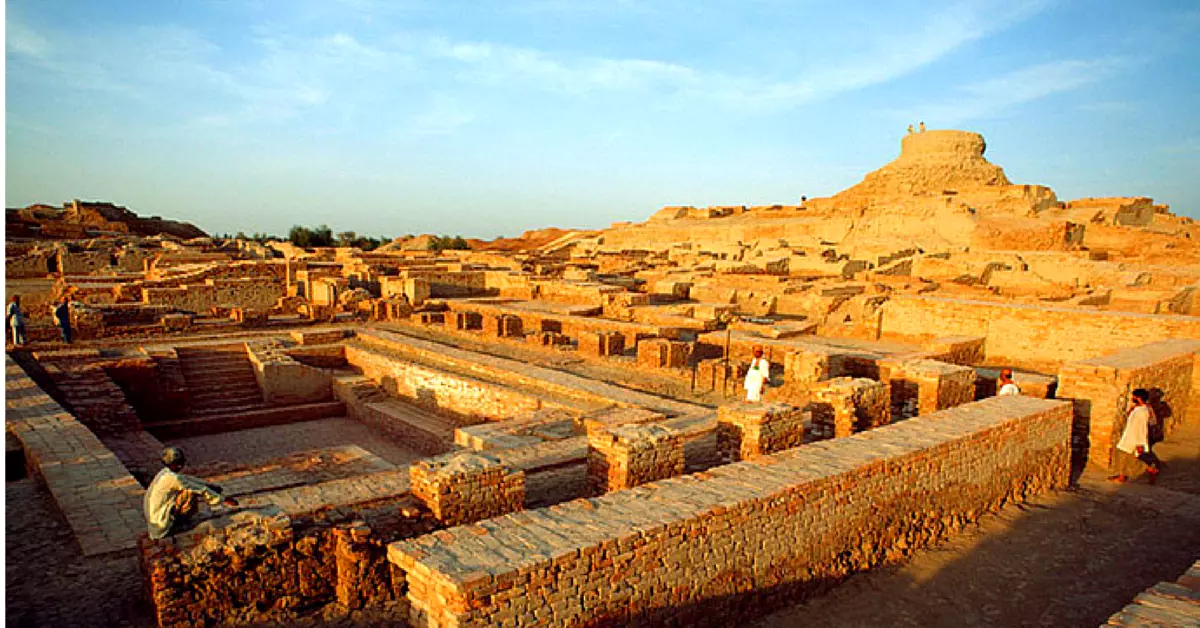
Table of Contents
Mohenjo Daro, or “Mound of the Dead” is an ancient Indus Valley Civilization city that flourished between 2600 and 1900 BCE. It was one of the first world and ancient Indus cities.
Mohenjo Daro, built around 2600, had been abandoned around 1700 B.C. Sir John Marshall’s archaeologists rediscovered it in the 1920s. His car, still in the Mohenjo-daro museum, shows his presence, struggle, and dedication to Mohenjo-daro.
Ahmad Hasan Dani and Mortimer Wheeler carried out further excavations in 1945. Mohenjo-Daro was most likely the administrative center of the ancient Indus Valley Civilization in ancient times.
The most developed and advanced city in South Asia during its peak, Mohenjo-Daro’s planning and engineering showed the city’s importance to the people of the Indus Valley.
Mohenjo-Daro was a remarkable construction, considering its antiquity. Its planned layout is based on a grid of streets laid out in perfect patterns. At its height, the city probably had around 35,000 residents. The buildings of the city were particularly advanced, constructed of same-sized sun-dried bricks of baked mud and burned wood. The public buildings of those cities also suggest a high degree of social organization.
Mohenjo-daro had been successively destroyed and rebuilt at least seven times. Each time, the new cities were built directly on top of the old ones. Flooding by the Indus may have caused the destruction.
The city is divided into two parts, the Citadel and the Lower City. Most of the Lower City remains uncovered, but that the Citadel had the public bath, a large residential structure designed to house 5,000 citizens and two large assembly halls has been determined. Mohenjo-daro, Harappa and their civilization vanished without a trace from history until discovered in the 1920s. Although extensively excavated in the 1920s, in-depth excavations were suspended in the 1960s.
The city’s name has been lost to time, but centuries later, denizens of the same area will call it Mohenjo Daro—the City of the Dead.
The citizens of this urban economic center have come a long way from their pastoral lives 500–1,000 years ago. There are other rivers but the Sindh River will forever remain the source of life. This city will be mentioned in history along with Mesopotamia, Egypt and China.
Mohenjo Daro, a successful city and economic hub, was part of the Indus Valley Civilization from 2600 to 1900 BC. Harappa, its twin in Punjab, and other cities, a beam of western India, together formed the Indus Valley Civilization, covering the size of Western Europe. The period from 1900 BC to 1300 BC witnessed the decline of the cities.
The Indus Valley Civilization was the largest of the four ancient civilizations, which included Mesopotamia, Egypt, and China. They were widely dispersed, spreading from Balochistan, Afghanistan, Sindh, and Punjab to Western India. A Buddhist Stupa was built over the original temple, where Shiva or Agni were probably worshipped.
Tragically, while we have extensive information about the other civilizations because on is able to decode the languages, even though one found scripts written on pottery, seals and amulets. Only 10% of Mohenjo Daro has been dig out. A lot more still waits to be discovered.
Discovered in 1911, Mohenjo Daro was excavated in 1922, and a treasure trove of pottery, seals, and other artifacts was discovered, which point to craft technology, trade, and economic expansion. Evidence suggests that the city was ruled through trade and religion because there is no evidence of warfare or conquests. The rulers may very well have been merchants, property owners, or religious leaders.
The brick houses, wells, drains, granaries, and baths indicate that people from many different classes and occupations lived together in a grid-like city whose architecture and urban planning were unique to the ancient world.
Our history books tell us that the Aryans descended from the Central Asian Mountains and decimated the earlier civilization around 1500 BC, but new evidence suggests that this was unlikely. It is more probable that climate change caused droughts due to the drying up of rivers and a hiatus in the monsoon, which led to the city’s abandonment and migration towards the west.
Other evidence shows that people continued to survive even after the climate changed because they used shifting crop patterns, planting wheat and barley during heavy monsoons and millet and rice in the declining phase. This resulted in de-urbanization because large storage spaces were no longer needed, and smaller home-based crop processing and storage systems were used.
Sadly, as is always the tradition in Pakistan, we are more prone to glory than to action. This is why Mohenjo Daro has been neglected for decades. No excavation has taken place, and certainly, no concrete preservation has been authorized.
Concluding, every site of Mohenjo Daro tells the undiscovered story of an ancient era. The handcrafted stupas and the material used for them are a remarkable part of history. Every year, thousands of tourists explore each one. However, as mentioned earlier, only 10% of the original has been excavated. The rest still needs attention.
Ejaz hussain is CEO of Pakistan tour and travel operating in Northern areas of pakistan offering honeymoon Packages from Pakistan in affordable rates with good quality services.
12Years of relentless tourism Services in Pakistan